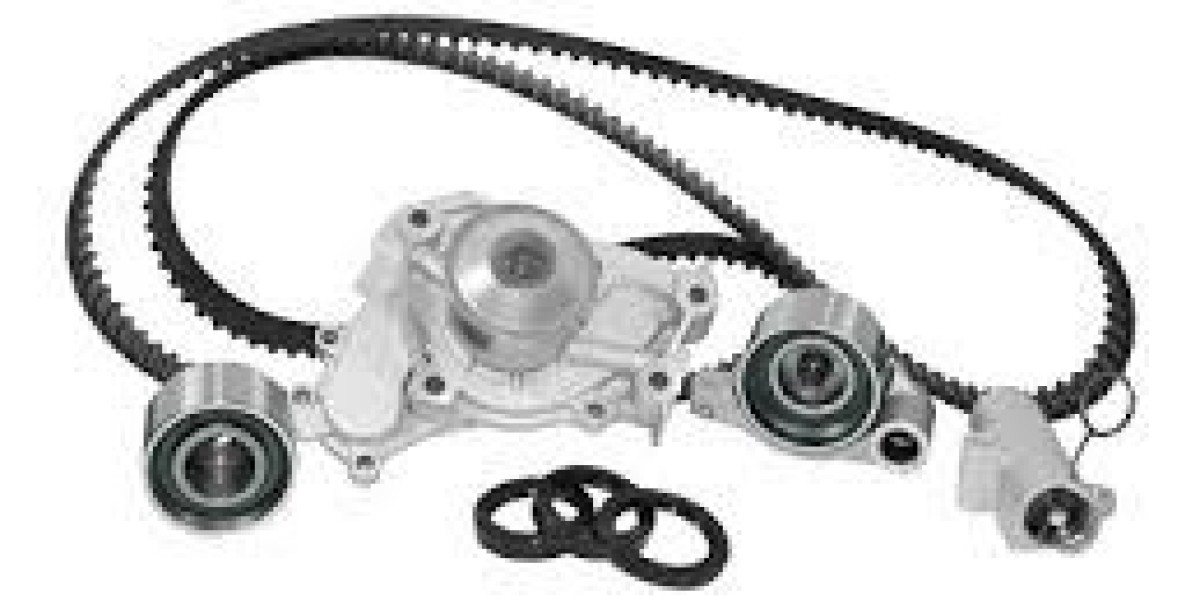The engine is the heart of every vehicle, and just like your heart needs proper circulation, your engine requires perfect timing to work efficiently. That’s where timing belt kits come in. These kits include the essential components that keep your engine running smoothly and in sync.
Whether you’re a car owner or a mechanic, understanding the role of timing belt kits is crucial to avoid sudden breakdowns and expensive repairs. In this article, we’ll explain what timing belt kits are, why they’re important, and how to identify when they need replacing.
What Is a Timing Belt Kit?
A timing belt kit is a package of parts used to maintain the timing system in an internal combustion engine. Typically, the kit includes:
Timing belt
Tensioner
Idler pulleys
Water pump (in some kits)
The belt itself connects the crankshaft and camshaft, ensuring valves and pistons move in perfect harmony. The other components help maintain proper tension and alignment over time.
Why You Should Replace the Whole Kit — Not Just the Belt
You might think changing just the belt is enough. However, when one part of the system wears out, the rest usually isn’t far behind. Installing a full kit prevents mismatched wear and reduces the risk of failure.
A broken timing belt can lead to serious engine damage, including bent valves or even a complete engine rebuild. That’s why replacing the full timing belt kits makes both mechanical and financial sense.
When Should You Replace a Timing Belt Kit?
Most vehicle manufacturers recommend replacing timing belt kits between 60,000 and 100,000 miles, but this varies by model and engine type. Here are signs it's time to check or replace your kit:
Engine misfires
Ticking or clicking noises from the engine
Oil leaking near the motor
Difficulty starting the car
Visible belt wear (cracks or frays)
Delaying replacement could cause engine failure at high speeds — a dangerous and costly risk.
Benefits of a Well-Maintained Timing Belt Kit
Replacing or maintaining your kit on schedule has multiple advantages:
Increased engine lifespan
Better fuel efficiency
Smoother performance
Reduced repair costs
Peace of mind on the road
It’s not just about fixing what’s broken — it’s about preventing damage before it happens.
DIY vs. Professional Installation: What’s Better?
While some experienced DIYers can replace a timing belt kit at home, it's generally advised to let a certified mechanic handle it. This job involves precision, engine timing calibration, and specialized tools.
A small mistake can ruin your engine. That’s why professional installation offers better results, warranty coverage, and confidence in safety.
How to Choose the Right Timing Belt Kit
Not all kits are created equal. To choose the right one for your vehicle:
Refer to your car’s manufacturer guidelines
Pick trusted brands known for quality
Ensure the kit includes all essential components
Confirm compatibility with your engine model
Buying cheap kits may save money upfront but lead to more costly failures down the line.
Final Thoughts
A timing belt kit isn’t just a part — it’s a protection system for your engine. Ignoring this component can lead to engine disasters, while timely replacement ensures a smooth, efficient ride for years.
If your car has over 60,000 miles or you notice any symptoms, check your vehicle manual or talk to your mechanic about installing a reliable timing belt kit.







